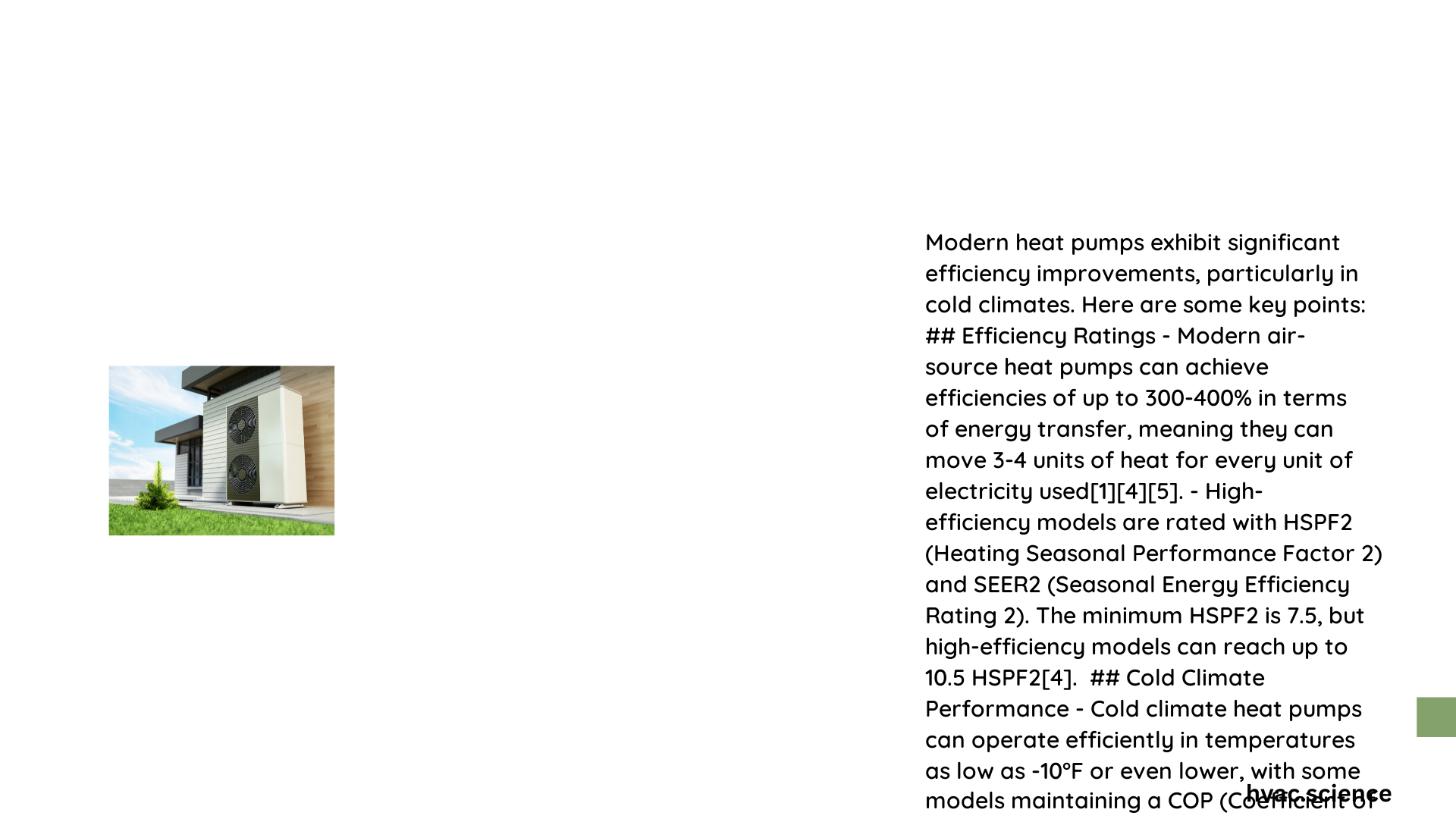Modern heat pump efficiency represents a revolutionary approach to energy-efficient heating and cooling technologies. Today’s advanced heat pumps leverage sophisticated engineering and thermodynamic principles to deliver unprecedented performance, transforming how we manage indoor climate control while significantly reducing energy consumption and environmental impact.
What Makes Modern Heat Pump Efficiency Unique?
How Do Performance Metrics Define Efficiency?
Modern heat pump efficiency is primarily measured through several critical performance indicators:
Coefficient of Performance (COP)
- Air-Source Heat Pumps: COP ranges from 2 to 4
- Ground-Source Heat Pumps: COP reaches 4 to 6
- Key Calculation:
[ \text{COP} = \frac{\text{Thermal Energy Transferred}}{\text{Electrical Power Input}} ]
Seasonal Efficiency Ratings
| Rating Type | Description | Typical Range | Minimum Standard (2023) |
|---|---|---|---|
| SEER2 | Cooling Efficiency | 14-25 | 14.3 |
| HSPF2 | Heating Efficiency | 7.5-10.5 | 7.5 |
What Technological Innovations Drive Efficiency?
Modern heat pump efficiency stems from several breakthrough technologies:
- Advanced Compressor Designs
- Variable-speed compressors
- Scroll compressor technology
-
Enhanced refrigerant management
-
Smart Control Systems
- AI-powered temperature optimization
- Predictive maintenance algorithms
-
Real-time performance monitoring
-
Enhanced Heat Exchanger Materials
- Micro-channel heat exchangers
- Corrosion-resistant coatings
- Improved thermal conductivity
How Do Environmental Factors Impact Performance?
Climate Considerations
- Temperature Range: -15°F to 120°F operational capability
- Humidity Tolerance: Advanced dehumidification features
- Geographical Adaptation: Customized system configurations
What Are the Economic Implications?
Cost-Benefit Analysis
- Initial Investment: $5,000 – $15,000
- Annual Energy Savings: 30-50% compared to traditional HVAC
- Payback Period: 5-10 years depending on local energy rates
What Challenges Exist in Modern Heat Pump Efficiency?
Key Limitations
- Complex installation requirements
- Higher upfront costs
- Technical maintenance complexity
- Performance variability in extreme temperatures
Future Outlook for Heat Pump Technology
Emerging Trends
- Integration with renewable energy systems
- Enhanced refrigerant technologies
- Increased electrification of heating solutions
- Smart grid compatibility
Practical Recommendations

For Homeowners
- Conduct professional energy audits
- Choose systems with high SEER2/HSPF2 ratings
- Consider local climate conditions
- Invest in professional installation
For Commercial Applications
- Implement comprehensive energy management strategies
- Explore modular heat pump configurations
- Prioritize scalable, adaptable solutions
Technical Considerations for Optimal Performance
- Proper Sizing
- Regular Maintenance
- Comprehensive Insulation
- Strategic Placement
Conclusion Insights
Modern heat pump efficiency represents a dynamic, evolving technology with immense potential for sustainable energy management. Continuous technological advancements promise even greater performance and environmental benefits in the coming years.
